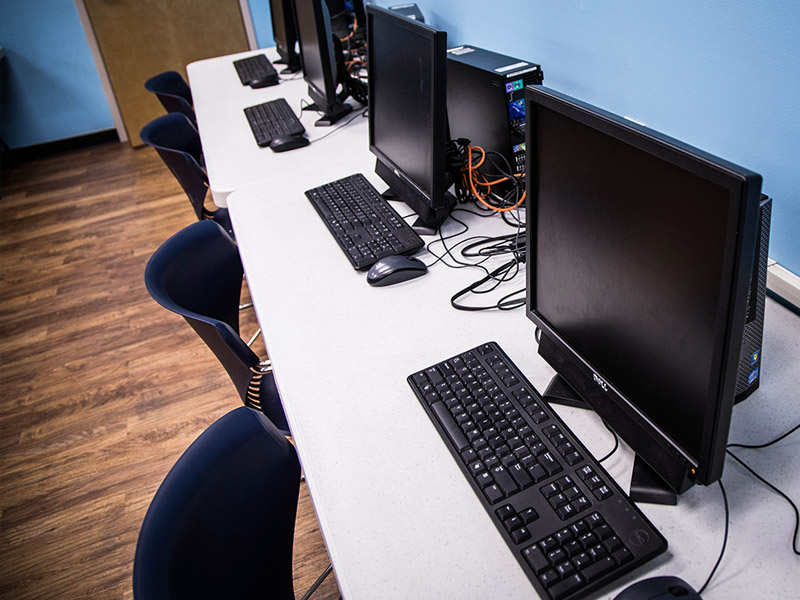No one experiences anxiety the same way as someone else. Understanding the signs, symptoms and side effects of anxiety is a key component toward starting the recovery journey.
Understanding Anxiety
Learn about anxiety
Anxiety disorders are known to be the most common mental illness to affect people in the United States. Anxiety is something that everyone will experience throughout their lives, as it is known to be a normal reaction to stress. However, for some people, anxiety can quickly become extremely excessive and overwhelming and can cause a severe debilitation in their ability to function.
While anxiety is typically something that is associated with adults, it is unfortunately not uncommon for children and adolescents to struggle with severe anxiety as well. The most common forms of anxiety disorders that present themselves in children and adolescents include the following:
Generalized anxiety disorder (GAD): When children and adolescents are suffering from GAD, they worry excessively about a variety of different things which leads them to experience levels of stress that begins to affect their ability to function on a daily basis. These children may be worrying about completing schoolwork, getting good grades, dealing with family issues, struggling relationships with peers, and/or their ability to perform well in the sports that they may be involved in. Children and adolescents with generalized anxiety disorder tend to be extremely hard on themselves and strive for constant perfection. These children may also find themselves needing to be repeatedly reassured or to repeatedly receive approval from other individuals in their lives.
Panic disorder (panic attacks): Panic attacks can be defined by short, periodic bursts of extreme panic that occur suddenly, seemingly out of nowhere, reach a peak within minutes, and then very slowly begin to pass. Children and adolescents will receive a diagnosis of panic disorder if they suffer from at least two of these unexpected attacks and are then plagued by a period of anxiety regarding whether or not they are going to have another one.
Obsessive-compulsive disorder (OCD): OCD is characterized by patterns of recurrent, unwanted, and intrusive thoughts. It can also occur when people experience the strong need to perform repetitive actions or rituals in order to get through their day.
Post-traumatic stress disorder (PTSD): PTSD can occur in children and adolescents when they have experienced a traumatic event and then continue to suffer from the high levels of anxiety and fear related to the event long after it actually occurred. These kids may find themselves plagued by recurring thoughts, memories, and dreams of the event that play out so intensely and vividly in their minds that it leaves them feeling as though they are experiencing the trauma over and over again.
Social anxiety disorder (social phobia): Children and adolescents who struggle with social anxiety disorder experience excessive feelings of anxiety and fear regarding social and performance situations. These children have persistent, chronic fears that they are being scrutinized by everyone around them. They feel a sense of constant worry about becoming embarrassed. These intense feelings cause many children and adolescents to shy away from social situations altogether in order to refrain from having to feel such overwhelming anxiety.
Statistics
Anxiety statistics
Anxiety disorders are said to affect 1 in 8 children and, in regards to adolescents, the National Institute of Mental Health states that the lifetime prevalence of anxiety disorders existing amongst 13 to 18 year olds is around 25.1%.
Causes and Risk Factors
Causes and risk factors for anxiety
There can be many different causes that lead to the onset of anxiety disorders, but it is most commonly agreed upon that it is a combination of different factors that work together to cause its development. These factors can include:
Genetic: Genetic factors appear to play a large role in the development of anxiety disorders in children and adolescents; especially when it comes to individual characteristics such as temperament because it affects how they react to situations and how they are able to handle stress.
Physical: Neurobiological determinants are also said to play a prominent role in the development of anxiety disorders in children and adolescents. Studies have shown that when chemical imbalances occur in the neurotransmitters in one’s brain, they become less able to send the proper amount of serotonin to the part of the brain that manages a person’s ability to experience feelings of well-being. This serotonin deficiency is said to have the potential to result in the onset of an anxiety disorder.
Environmental: The environment in which a child or adolescent grows up can have a major impact on whether or not he or she will develop an anxiety disorder. Things like caregiver attention and the assurance of needs being met are extremely influential in the emotional development of children. If children are not receiving the attention they need, or if their basic needs are not regularly being met, they are at risk for experiencing extreme levels of anxiety. Also, children who have grown up in hostile or violent home environments may experience higher levels of anxiety due to the fact that they are unable to experience a true feeling of safety and comfort in their everyday lives.
Risk Factors:
- Experiencing trauma
- Having blood relatives with an anxiety disorder
- Being exposed to violence on a regular basis
- Growing up in an inconsistent, unpredictable household where caregivers were not always present
- Being abused or neglected
- Being pressured by parents to perform to a certain level academically and/or athletically
Signs and Symptoms
Signs and symptoms of anxiety
The signs and symptoms of anxiety disorders in children and adolescents will vary based on the different temperaments and personalities of the children suffering from them, as well as being based on the type of anxiety that they are struggling with.
Behavioral symptoms:
- Refusing to go to school
- Angry outbursts / temper tantrums
- Avoidance of certain people, places, and/or situations
- Restlessness
Physical symptoms:
- Sleep difficulties
- Muscle tension
- Frequent urination
- Headaches
- Stomachaches
Cognitive symptoms:
- Repeated nightmares
- Irritability
- Edginess
- Repetitive thinking
- Impatience
Psychosocial symptoms:
- Feelings of loneliness
- Social isolation
- Low self-esteem
- Mood swings
- Constantly feeling under pressure
Effects
Effects of anxiety
When children and adolescents do not receive treatment for their anxiety disorder, they can suffer from a number of negative effects, many of which can be long-lasting and follow them into adulthood. Some examples of these effects can include:
- Performing poorly in school
- School refusal
- Missing out on important social experiences
- Engaging in substance abuse
Fortunately, anxiety disorders are treatable mental disorders. Helping your loved one into a treatment program can help them overcome their anxiety disorder and lead a happy, productive life.
Co-Occurring Disorders
Anxiety and co-occurring disorders
There are a number of disorders that can occur alongside anxiety disorders. Examples of the disorders that commonly present themselves in children and adolescents include:
- Attention-deficit hyperactivity disorder (ADHD)
- Depressive disorders
- Eating disorders
- Bipolar disorder
- Body dysmorphic disorder (BDD)
- Sleep disorders
- Substance abuse disorders



